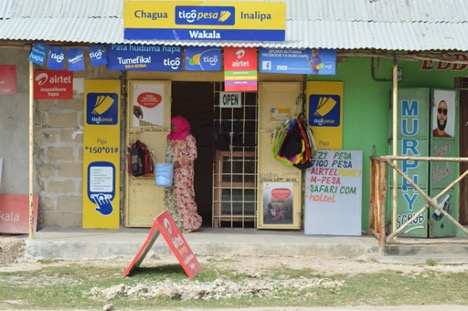Evaluating Strategies To Promote Adoption Of Digital Payments In Tanzania

The use of digital payments is growing rapidly around the world, with 1.35 billion registered accounts facilitating more than a trillion USD dollars in transactions annually.[1] Despite this, cash is still the primary payment method, particularly in retail transactions in low- and middle-income countries. While cash is convenient due to its widespread acceptance and lack of fees or additional technologies required for use, it can also limit access to advanced financial services, such as savings accounts, credit and insurance, reduce transparency and accountability (and thus potentially increase tax evasion, money laundering and other financial crimes), and hinder businesses and economies from benefiting from digital payment technologies.
The Tanzanian government has recognized the potential benefits of promoting digital payments and has taken significant steps towards encouraging widespread adoption. One such step is the launch of the Tanzania Instant Payments System (TIPS), which allows low-cost retail payments between different digital financial service providers, including banks and non-bank e-money issuers (EMIs).
To catalyze adoption of digital payments in Tanzania, IPA is working with the private sector to conduct a randomized evaluation that will help identify the most effective strategies for promoting digital payments. The evaluation is based on the concept that adopting a new payments technology (i.e., switching from cash to digital payments) confronts merchants and consumers with a coordination problem: consumers value digital payment methods only to the extent that merchants accept them, and merchants only adopt these methods when enough consumers demand their use. To help overcome this coordination problem, the evaluation will test the efficacy of referral marketing and test different modalities, such as same-sided referrals, where consumers refer other consumers to adopt digital payments, and cross-sided referrals, where merchants refer consumers and consumers refer merchants. These will also be compared to the partner financial service provider sending incentives directly to merchants and consumers operating in the same markets but without the referral mechanism. The results will help determine the impact of the coordinating referral program versus merely sending incentives and whether same-sided or cross-sided referrals are more effective in promoting the adoption of digital payments. The evaluation will be followed by an assessment of whether the launch of TIPS further deepens the adoption of digital payments in Tanzania.
Results of this project will be available in 2024.
Sources
[1] GSMA. 2022. “State of the Industry Report on Mobile Money” https://www.gsma.com/sotir/wp-content/uploads/2022/03/GSMA_State_of_the_Industry_2022_English.pdf











